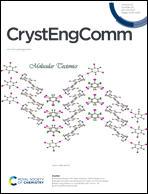An electrically driven single microribbon based near-infrared exciton–polariton light-emitting diode
Abstract
Achieving electrically-driven exciton–polaritons has drawn substantial attention toward developing ultralow-threshold coherent light sources, containing polariton laser devices and high-performance light-emitting diodes (LEDs). In this work, we demonstrate an electrically driven exciton–polariton LED, which is made of an individual Ga-doped ZnO (ZnO:Ga) microribbon and p-type GaAs substrate working as its hole injecting layer. The LED device can radiate near-infrared luminescence at a wavelength of about 880 nm and a narrow line width of ∼55 nm. Specifically, the electroluminescence spectra are decomposed into a series of interference peaks. And the corresponding peak spacing exhibits observable widening in the longer wavelength shoulder. By studying the spatially resolved electroluminescence spectra, the multimode features can be ascribed to the exciton–polariton behavior, yielding strong coupling of the exciton and Fabry–Perot cavity, which self-formed by the rectangular microribbon. Accordingly, the exciton–photon coupling strength in terms of Rabi splitting is measured to be 109 meV. Our results provide and enable the realization of electrically driven polariton LEDs from self-formed Fabry–Perot microcavities at room temperature, and can also present a promising step towards achieving electrically-driven laser devices having a significantly lower threshold in these systems.

- This article is part of the themed collection: Crystal Growth


 Please wait while we load your content...
Please wait while we load your content...